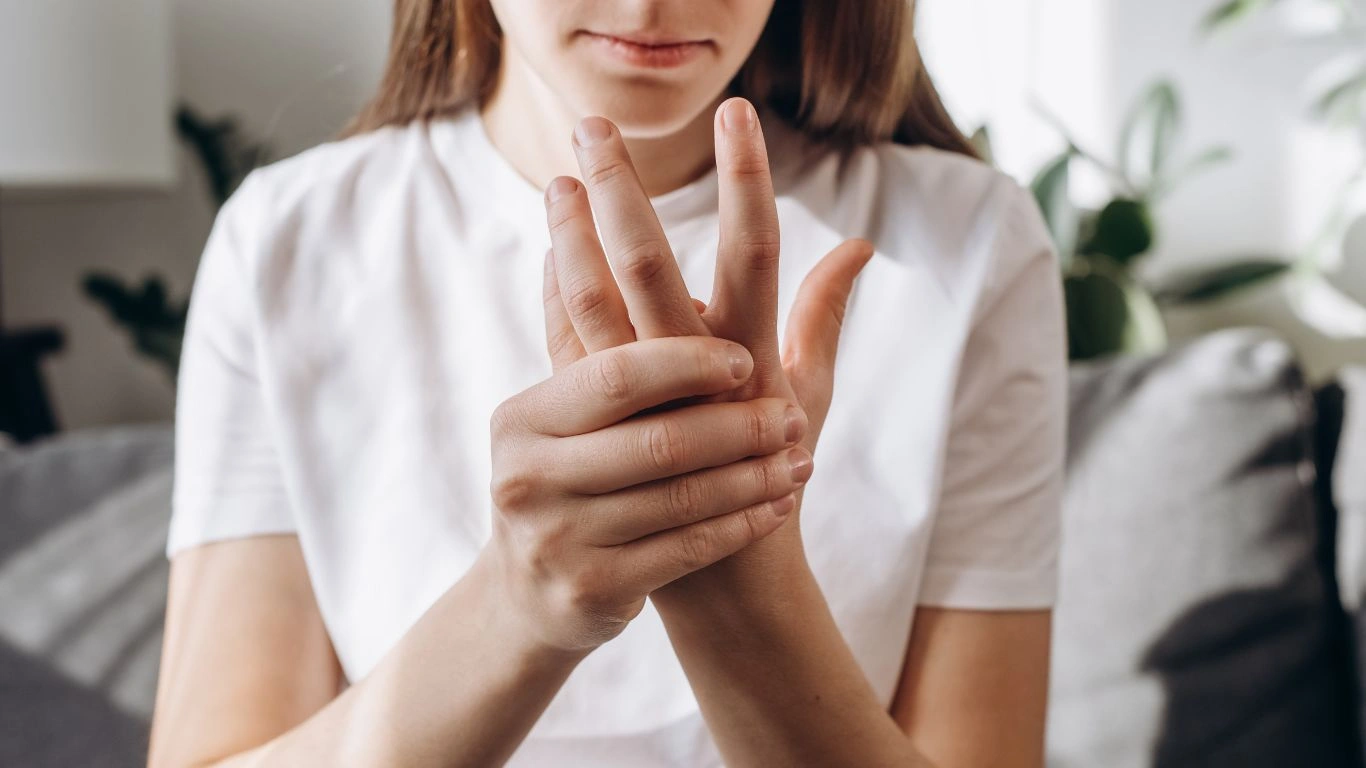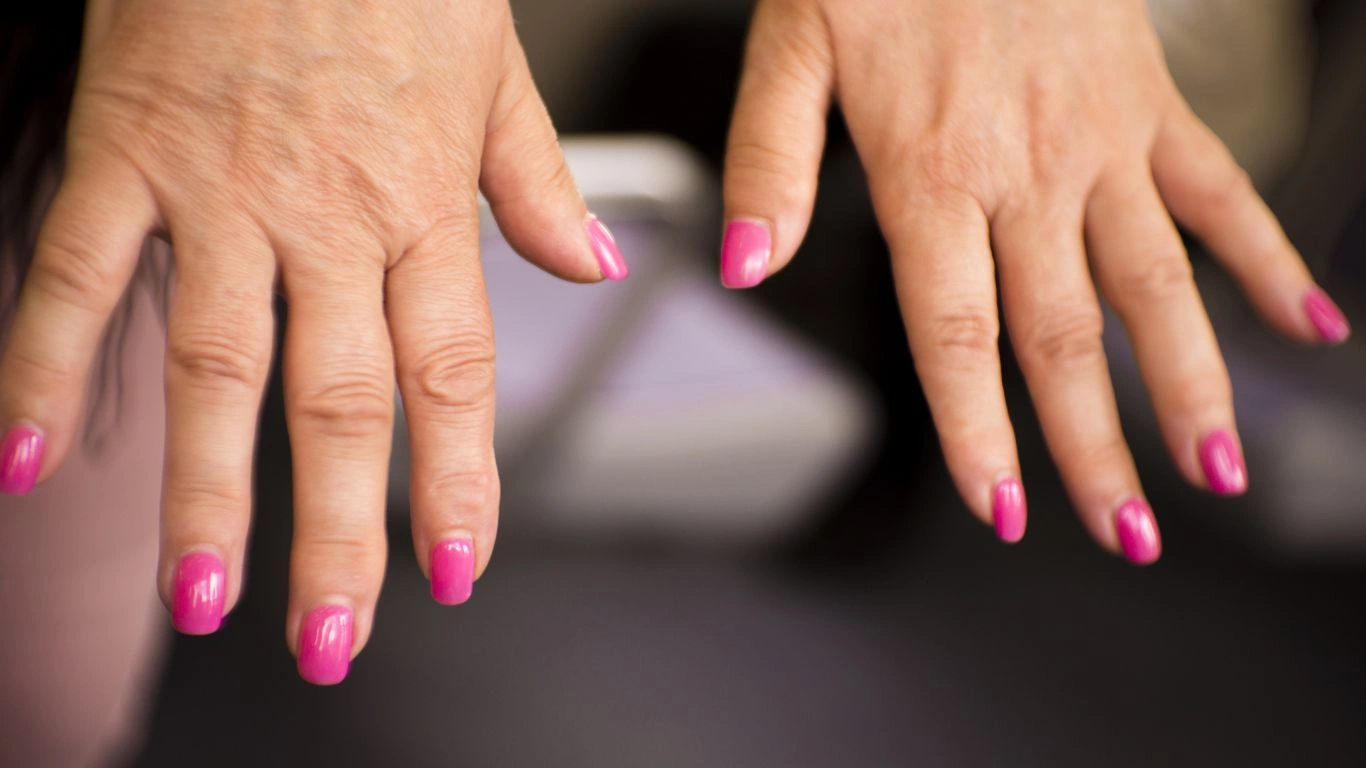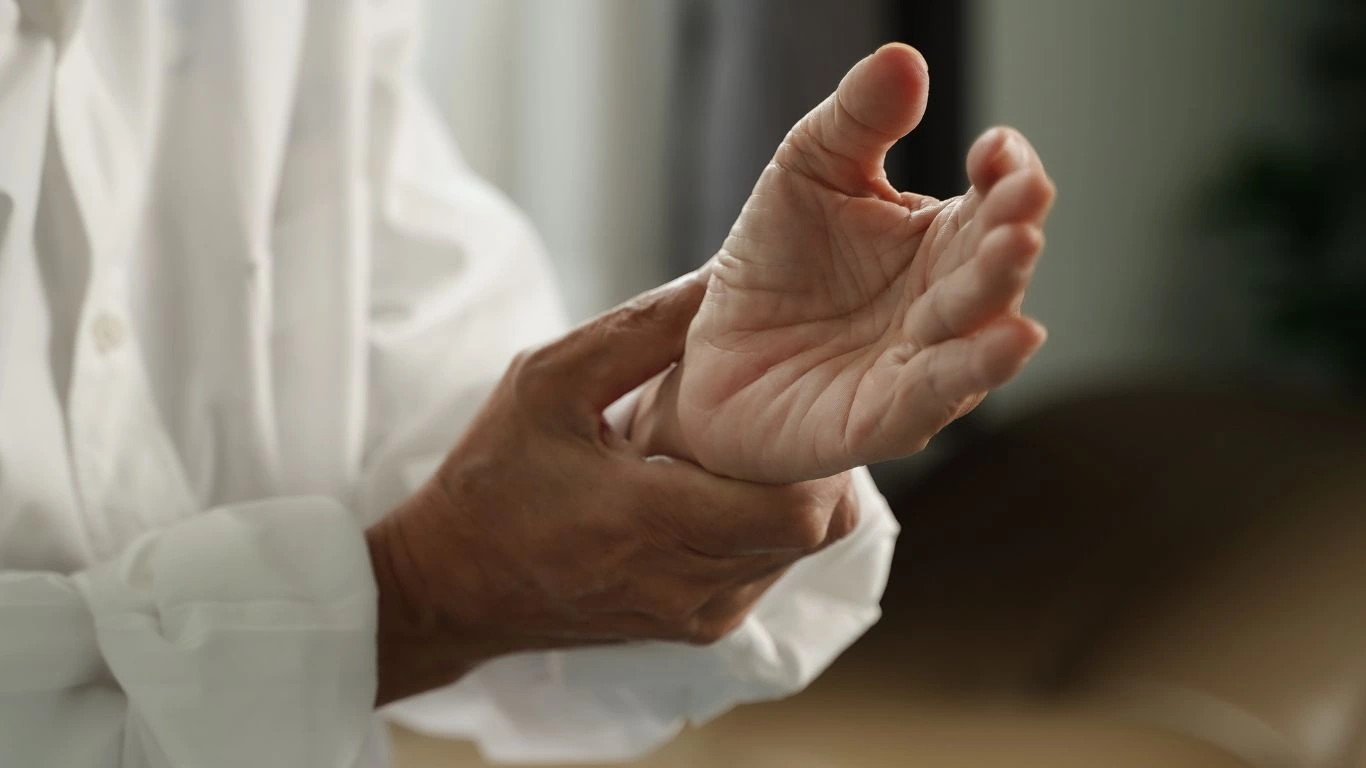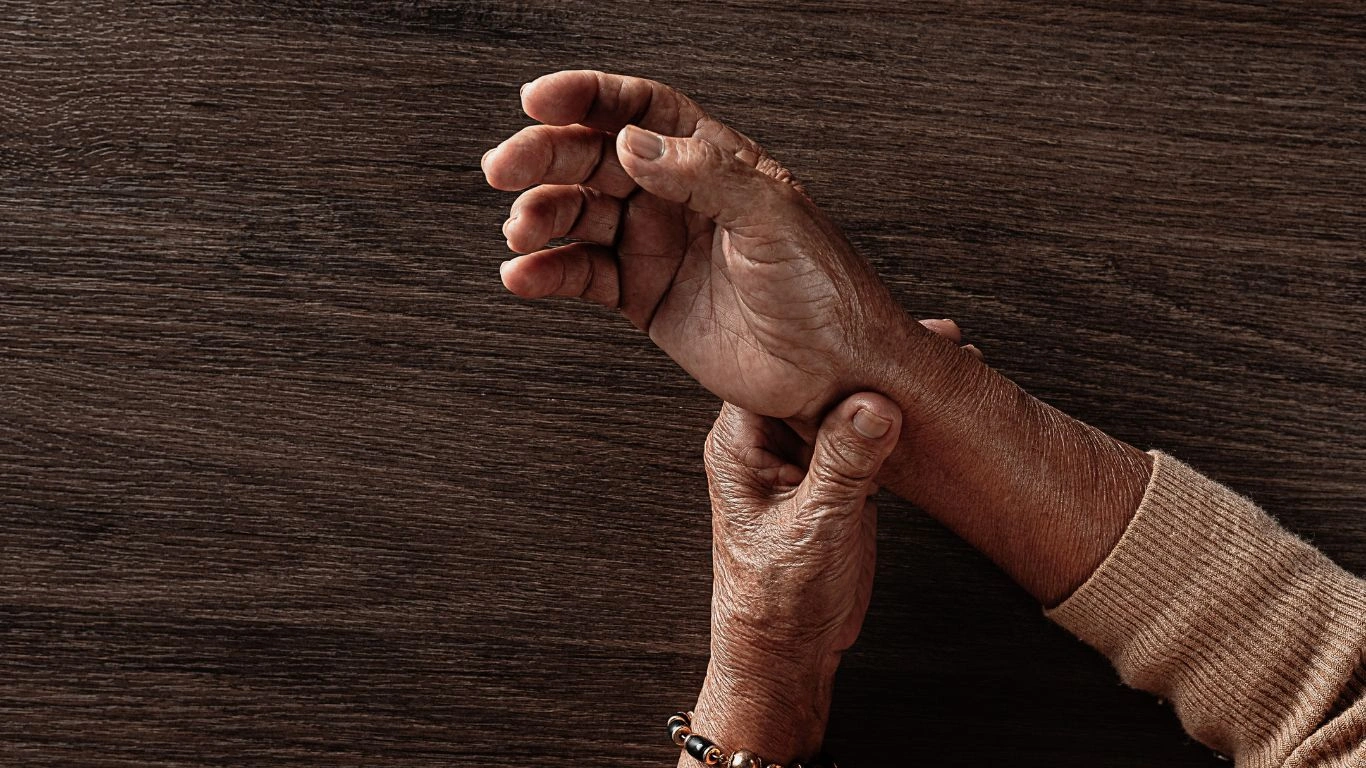Improve Hand Strength with These Effective Rheumatoid Arthritis Exercises
Rheumatoid arthritis (RA) is a chronic autoimmune condition that affects millions of people worldwide. It’s not just about joint pain and inflammation; it’s about a complete disruption to your daily life. For many, one of the most challenging aspects is the loss of hand strength, making even the simplest tasks feel impossible. If you’ve ever found it hard to grip a coffee mug or open a jar, you know exactly what I mean. As someone who has worked in the field of diagnosing, treating, and managing RA, I’ve seen firsthand how it affects hand strength. But don’t worry, there’s hope! You can improve your hand strength and regain some independence with the right approach.
Understanding Rheumatoid Arthritis and Its Impact on Hand Strength

Rheumatoid arthritis is not just a disease that causes pain in the joints. It’s an autoimmune disorder where your body’s immune system mistakenly attacks its own tissues, leading to inflammation in the joints. This inflammation doesn’t just cause pain – it can lead to long-term joint damage. Over time, the chronic swelling can result in a loss of function, especially in the hands, which are the most commonly affected areas for people with RA.
If you’re living with RA, you might have already noticed that your hand strength isn’t what it used to be. Simple tasks like gripping, holding, or even typing can become difficult as the disease progresses. The pain and stiffness can leave you feeling frustrated, but here’s the good news: with the right strategies, you can start improving hand strength and get back to doing the things you love.
The Connection Between Rheumatoid Arthritis and Hand Function
Before we dive into the methods for improving hand strength, let’s take a deeper look at how RA impacts hand function. As the condition progresses, it causes inflammation in the small joints of the hands. This leads to joint stiffness and, in some cases, joint deformities. The most common deformities include ulnar deviation, where the fingers shift towards the pinky side, and boutonnière deformity, where the middle joint of the finger bends unnaturally. These deformities not only make it hard to move the fingers properly but also significantly reduce grip strength.
It’s also important to understand that RA affects not just the bones, but the soft tissues around the joints as well. The tendons, ligaments, and muscles that help you move and control your hands can become weakened over time due to inflammation and joint damage. This makes activities that require fine motor skills, like buttoning a shirt or using a pen, feel more challenging.
Ways to Improve Hand Strength When Living with Rheumatoid Arthritis

Now that we’ve discussed why your hand strength might be suffering, let’s move on to how you can start working to improve it. While there’s no one-size-fits-all solution, I’ve seen great success with several approaches that can make a real difference.
1. Occupational Therapy and Hand Exercises
One of the best things you can do for improving hand strength is to work with an occupational therapist. These healthcare professionals specialize in helping people improve their ability to perform daily tasks, and they can design a personalized plan to address your hand strength issues. Occupational therapists often recommend hand exercises that are specifically designed to improve grip strength, flexibility, and overall function.
Some of these exercises may include:
- Ball squeezes: Squeezing a soft stress ball can help improve your grip strength and range of motion.
- Finger stretches: Stretching your fingers out and holding them in extended positions can help maintain flexibility.
- Putty exercises: Working with therapy putty can help increase strength and dexterity in your hands and fingers.
It’s crucial to start slow and not overdo it. Your therapist will guide you on how to gradually increase the intensity and frequency of exercises to prevent any further joint damage. And remember, consistency is key! It may feel tough at first, but with regular practice, you’ll notice improvements.
2. Adaptive Tools for Easier Hand Use
Sometimes, improving hand strength isn’t about pushing through the pain – it’s about finding smart ways to adapt your environment to your needs. There are many tools available that can make life easier when you’re living with RA. For example, there are jar openers, button hooks, and pen grips designed to reduce strain on your hands. These tools are affordable and can be a game-changer for managing everyday tasks like cooking or dressing.
In addition to adaptive tools, there are also specific ergonomic products designed to help reduce the strain on your hands. Ergonomic keyboards, for example, can help alleviate pain if typing is a challenge. These products are designed to reduce the pressure on your joints, making it easier to perform tasks for longer periods without feeling fatigued or in pain.
3. Medication and Medical Treatments
Of course, improving hand strength also requires managing the inflammation caused by rheumatoid arthritis. Effective medication plays a critical role in keeping inflammation in check and preventing further joint damage. Non-steroidal anti-inflammatory drugs (NSAIDs) can help with pain relief, while disease-modifying antirheumatic drugs (DMARDs) like methotrexate and biologics target the underlying autoimmune process of RA.
It’s important to work with your healthcare provider to find the right medication for your specific condition. By managing inflammation, you not only help protect your joints from further damage, but you also create a more favorable environment for improving hand strength through therapy and exercise.
Incorporating Strength-Building Strategies Into Your Daily Routine

When it comes to improving hand strength with rheumatoid arthritis, consistency is everything. It’s not just about doing exercises during therapy appointments – it’s about weaving these habits into your daily routine. One of the biggest challenges that many of my patients face is finding the time or energy to practice exercises regularly. However, with a few adjustments to your daily habits, you can start making significant progress.
Make Hand Exercises Part of Your Morning Routine
Starting your day with a few minutes of hand exercises can help set the tone for the rest of the day. You don’t have to go all out – just a few stretches, finger extensions, or ball squeezes in the morning can help alleviate stiffness and improve flexibility. These exercises can also prepare your hands for the day ahead, making it easier to handle common tasks like brushing your teeth or making breakfast.
My experience working with patients has shown me that building small routines around their everyday activities helps them stay motivated. For instance, if you have a habit of drinking coffee in the morning, try squeezing a soft stress ball in your hand while enjoying your cup. These little moments throughout the day really add up!
Incorporating Hand Stretches During Breaks
If you work at a desk, it’s easy to forget about your hands when you’re focusing on a task. But taking short breaks to stretch your fingers and wrists can work wonders. You don’t need to take long breaks – even just a couple of minutes every hour can significantly reduce hand stiffness and improve blood flow. Use these breaks to perform gentle stretches or rotate your wrists to relieve tension and prevent further pain.
For example, during your lunch break, take a minute to stretch out your fingers, then follow it up with a quick ball squeeze. It doesn’t need to feel like a huge commitment, but it will make a big difference over time. As a bonus, you might find that your hands feel more mobile and flexible as you continue to incorporate these quick exercises into your routine.
Nutrition’s Role in Rheumatoid Arthritis and Hand Strength

We all know that diet plays a role in overall health, but did you know that what you eat can also affect your rheumatoid arthritis symptoms? A well-balanced diet rich in anti-inflammatory foods can help manage symptoms and support hand strength improvement. While it may not replace medication or therapy, it can certainly complement your efforts and speed up your progress.
Anti-Inflammatory Foods to Add to Your Diet
In my practice, I always encourage my patients to include foods that help reduce inflammation. Omega-3 fatty acids are one of the most powerful tools in fighting inflammation. You can get omega-3s from sources like fatty fish (think salmon, mackerel, and sardines) or plant-based sources like chia seeds, walnuts, and flaxseeds.
Another important group of foods are antioxidants, which help protect your cells from damage. Fruits and vegetables like berries, spinach, and kale are loaded with antioxidants. These foods don’t just support your immune system – they also work to keep your joints healthy. And don’t forget about turmeric and ginger! These spices have natural anti-inflammatory properties and can be easily added to your meals, whether in curries, soups, or smoothies.
Supplements That Can Help
If you’re having trouble getting enough of these nutrients from food alone, there are some supplements that can be useful. Fish oil supplements, for example, are a great way to get those essential omega-3s if you’re not eating enough fatty fish. Glucosamine and chondroitin are also popular supplements that may help with joint health and improve mobility. However, before adding any supplements to your regimen, it’s always best to consult with your healthcare provider to make sure they’re right for you.
Foods to Avoid
While some foods can help, others may contribute to inflammation and make your symptoms worse. Processed foods, refined sugars, and excessive amounts of red meat can all exacerbate inflammation in the body. It’s wise to limit or avoid these foods as much as possible to keep your joints as healthy as they can be.
One of the most common pieces of advice I give my patients is to focus on an anti-inflammatory, whole-foods diet. It doesn’t need to be complicated – just a simple shift toward more plant-based, nutrient-dense foods can help keep inflammation in check and support your body’s healing process.
Physical Therapy: A Key Component for Hand Strength

While occupational therapy is a key player in hand strength improvement, physical therapy can also be incredibly beneficial for people living with rheumatoid arthritis. In fact, many of my patients find that a combination of both therapies works wonders for improving function and reducing pain. Physical therapists focus more on overall movement, strength, and joint alignment, helping you regain strength in your hands as well as your arms and shoulders.
Strengthening Exercises and Joint Protection Techniques
Physical therapists often introduce strengthening exercises that target not just the hands but the entire upper body. This holistic approach can help reduce the load on your hands, allowing them to perform better. For instance, strengthening your forearms and wrists can reduce the strain on your fingers and help you maintain better hand function.
Additionally, physical therapists teach you how to use your joints in a protective way to prevent further damage. They’ll help you understand how to distribute force more evenly across your body, which is especially helpful when lifting or holding objects. By practicing proper body mechanics, you’ll reduce the risk of overburdening your hands and wrists.
Incorporating physical therapy into your treatment plan might be just the thing to boost your hand strength, prevent further damage, and ultimately improve your quality of life. If you haven’t already, I highly recommend consulting with a physical therapist to create a program tailored to your needs.
Managing Flare-Ups and Preventing Joint Damage

While working with individuals who have rheumatoid arthritis (RA), one of the most crucial aspects we discuss is how to manage flare-ups and prevent further joint damage. Even with all the right exercises, medications, and lifestyle changes, flare-ups are a part of life when living with RA. They can be incredibly frustrating and painful, especially when you’ve worked so hard to improve your hand strength. However, learning how to manage flare-ups can make a significant difference in maintaining your progress and reducing the long-term impact on your joints.
Recognizing the Signs of a Flare-Up
Before we dive into how to manage flare-ups, it’s important to recognize the signs. Every person’s experience with RA is different, but common symptoms of a flare-up include increased joint pain, swelling, stiffness, and fatigue. In your hands, you may notice that gripping objects becomes more difficult or that your fingers feel tight and stiff. These signs can signal that your immune system is ramping up the inflammation in your joints.
During a flare-up, it’s vital to listen to your body. If you push through the pain without allowing your joints to rest, it can cause even more damage in the long run. I’ve worked with patients who tried to “push through” their symptoms, only to find that they were actually doing more harm than good. That’s why it’s important to recognize a flare-up early and take steps to manage it before it becomes unmanageable.
Tips for Managing a Flare-Up
When a flare-up hits, there are several strategies you can employ to minimize its effects on your hands and overall well-being. First and foremost, take it easy! Rest is essential when dealing with inflammation. While it might be tempting to keep going with your usual daily routine, give yourself permission to slow down and take breaks when needed.
Heat and cold therapy can also be incredibly beneficial during a flare-up. Applying a warm compress to your hands can help relax stiff muscles and improve blood circulation, while a cold compress can reduce swelling and numb pain. It’s all about finding what works best for you during these flare-ups. Personally, I find that alternating between the two methods gives the best relief, but some of my patients prefer one over the other.
Maintaining Hand Strength During Flare-Ups
Even though flare-ups can make it more difficult to perform hand exercises, it’s essential to continue working on your hand strength. Of course, you’ll need to adjust the intensity of your exercises based on how you’re feeling, but don’t let a flare-up derail your progress completely. One approach I recommend is focusing on gentle stretches and light exercises that don’t push your joints too hard. A little bit of movement is better than none, as it can help maintain flexibility and prevent the stiffness from worsening.
Another tip is to incorporate adaptive tools into your daily routine to reduce the strain on your hands during a flare-up. For example, using ergonomic tools or devices that make opening jars, holding a pen, or gripping objects easier can take some of the pressure off your joints while still allowing you to stay active and engaged. You can also adjust your grip strength exercises to make them less intense, such as squeezing a soft stress ball for a shorter amount of time, or using lighter putty during therapy.
Stay Positive: The Importance of Mental and Emotional Health

One aspect of rheumatoid arthritis that often goes unnoticed is the impact it has on mental and emotional health. Chronic pain and the loss of hand strength can lead to feelings of frustration, helplessness, and even depression. I’ve seen so many people struggling not only physically but mentally with RA. It’s important to recognize that your emotional health is just as critical as your physical health in managing the disease.
Mindset Matters
Adopting a positive mindset can make a world of difference when living with RA. I always encourage my patients to focus on what they can do, rather than what they can’t. Yes, there may be limitations, but there are also ways to adapt and work around them. Focusing on your accomplishments, even the small victories, can help shift your perspective and improve your mental outlook.
In addition to a positive mindset, stress management is crucial for RA patients. Stress can trigger flare-ups and worsen symptoms, so it’s vital to find ways to relax and de-stress. Techniques like deep breathing, meditation, and yoga can help calm your mind and reduce the physical toll stress takes on your body. And never underestimate the power of laughter – spending time with loved ones, watching a funny movie, or engaging in activities that bring joy can help lighten the emotional load of living with RA.
Support Systems: You Don’t Have to Do It Alone
It’s easy to feel isolated when living with a chronic condition, but building a support network is essential. Whether it’s family, friends, or fellow RA patients, surrounding yourself with people who understand your struggles can provide emotional relief and practical advice. Joining online communities or local support groups can also be incredibly helpful. I’ve seen countless patients benefit from sharing their experiences with others who are going through the same thing. They can offer insights into what works for them, provide encouragement, and give you a sense of community.
References
To learn more about rheumatoid arthritis and its impact on hand strength, check out these reliable resources:
- Health Usias – Your go-to source for RA management tips
- American College of Rheumatology – Expert resources and treatment options
- Centers for Disease Control and Prevention – Arthritis resources and facts
Disclaimer
The information provided in this article is for educational purposes only and is not intended to replace professional medical advice. Always consult with your healthcare provider before making any changes to your treatment or lifestyle. Each individual’s experience with rheumatoid arthritis is unique, and what works for one person may not work for another.

Tarra Nugroho is a dedicated Nurse Practitioner with a strong foundation in family and preventive care. She brings both compassion and clinical expertise to her practice, focusing on patient-centered care and health education. As a contributor to Healthusias.com, Tarra translates medical knowledge into clear, empowering articles on topics like women’s health, chronic disease management, and lifestyle medicine. Her mission is simple: help people feel seen, heard, and informed—both in the clinic and through the content she creates. When she’s not caring for patients, Tarra enjoys weekend hikes, plant-based cooking, and curling up with a good health podcast.






